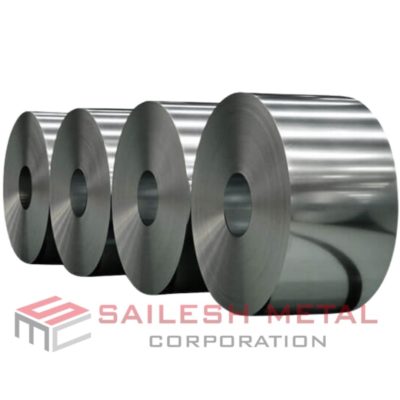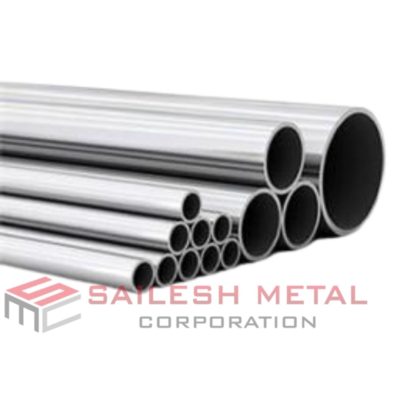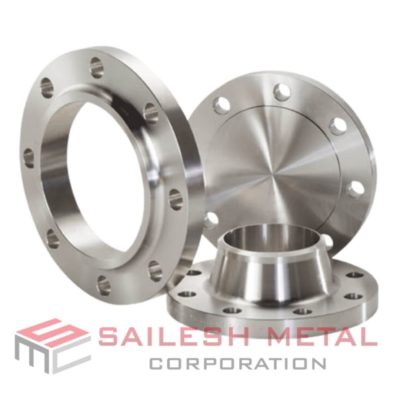Hastelloy C2000
Supplied, Manufactured & Exported by Sailesh Metal Corporation.
Common Trade Names: Hastelloy C2000, Alloy C2000.
Hastelloy C2000 UNS N06200, Most versatile, corrosion-resistant alloy with excellent resistance to uniform corrosion in oxidizing or reducing environments. Excellent resistance to stress corrosion cracking and superior resistance to localized corrosion as compared to C276 alloy.
Hastelloy C2000 alloy is unique among the versatile nickel-chromium-molybdenum materials in having a deliberate copper addition supplied, manufactured & distributed by Sailesh Metal Corporation. This provides greatly enhanced resistance to sulfuric acid. It also has a high chromium content, to maximize its resistance to oxidizing chemicals and process streams contaminated with ferric ions and dissolved oxygen.
Like other nickel alloys, it is ductile, easy to form and weld, and possesses exceptional resistance to stress corrosion cracking in chloride-bearing solutions (a form of degradation to which the austenitic stainless steels are prone). It is able to withstand a wide range of oxidizing and non-oxidizing chemicals and exhibits outstanding resistance to pitting and crevice attack in the presence of chlorides and other halides.
In what forms Hastelloy C2000 is available at Sailesh Metal Corporation
Hastelloy C2000 Fittings
Hastelloy C2000 Pipes
Hastelloy C2000 Flange
Hastelloy C 2000

Hastelloy C 2000 Fittings

Hastelloy C 2000 Pipes

Hastelloy C 2000 Flanges

Hastelloy C2000 Chemical Properties
| Alloy (UNS) | Ni | Cr | Mo | W | Cu | Fe | Carbon |
|---|---|---|---|---|---|---|---|
| C2000 (N06200) | Bal | 22.00-24.00 | 15.00-17.00 | – | 1.30-1.90 | 3.00 max. | 0.010max. |

Welding & Fabrication
Hastelloy C2000 alloy is very amenable to the Gas Metal Arc (GMA/MIG), Gas Tungsten Arc (GTA/TIG), and Shielded Metal Arc (SMA/Stick) welding processes. Wrought products of Hastelloy C2000 alloy are supplied in the Mill Annealed (MA) condition, unless otherwise specified. This solution annealing procedure has been designed to optimize the alloy’s corrosion resistance and ductility. Following all hot forming operations, the material should be re-annealed, to restore optimum properties. The alloy should also be re-annealed after any cold forming operations that result in an outer fiber elongation of 7% or more. The annealing temperature for Hastelloy C2000 alloy is 1149°C (2100°F), and water quenching is advised (rapid air cooling is feasible with structures thinner than 10 mm (0.375 in). Ahold time at the annealing temperature of 10 to 30 minutes is recommended, depending on the thickness of the structure (thicker structures need the full 30 minutes).
Hastelloy C2000 alloy can be hot forged, hot rolled, hot upset, hot extruded, and hot-formed. However, it is more sensitive to strain and strain rates than the austenitic stainless steels, and the hot working temperature range is quite narrow. For example, the recommended start temperature for hot forging is 1232°C (2250°F) and the recommended finish temperature is 954°C (1750°F). Moderate reductions and frequent re-heating provide the best results, as described in the “Welding and Fabrication” brochure. This reference also provides guidelines for cold forming, spinning, drop hammering, punching, and shearing. The alloy is stiffer than most austenitic stainless steels, and more energy is required during cold forming. Also, Hastelloy C2000 alloy work-hardens more readily than most austenitic stainless steels and may require several stages of cold work, with intermediate anneals.
While cold work does not usually affect the resistance of Hastelloy C2000 alloy to general corrosion, and to chloride-induced pitting and crevice attack, it can affect resistance to stress corrosion cracking. For optimum corrosion performance, therefore, there annealing of cold-worked parts is important.



